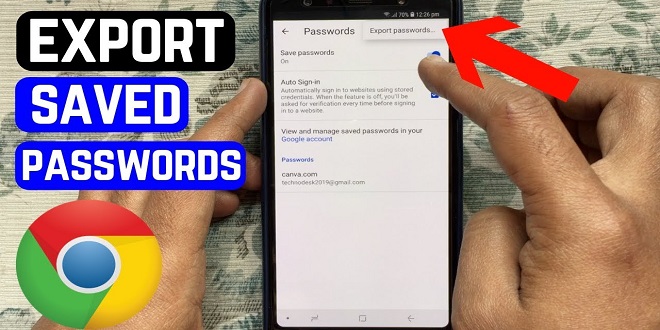
It is essential to have a safe and organized way of storing and managing passwords in today’s digital age. It can be difficult to keep track of all the passwords you use on so many different online services and platforms. If your passwords aren’t properly managed and secured, you could be at risk for identity theft or other cybercrimes. We will be covering the steps to protect and export your passwords in this article.
Exporting your Passwords
Exporting passwords is a great way of having a backup of your login information in the event that something happens to your device. These are the most common ways to export your passwords.
Using a Password Manager. Many password managers like LastPass, 1Password and Dashlane allow you to export passwords in many file formats such as CSV and JSON. If you use a password manager to store login information, this is a great option.
Using Your Browser: Many web browsers such as Google Chrome, Mozilla Firefox and Microsoft Edge have built-in tools that let you export your passwords. If you use your browser to store login information, this is a great option.
The Command Line: If your command line skills are good, you can export passwords from your keychain. To export your passwords on a Mac you can use “security” to do so, but you can also use “cmdkey” to do it on a Windows PC.
Password Protection
ZOO Repairs says that exporting passwords is essential, but not sufficient. To protect them. These are additional steps to ensure your passwords are secure:
Secure Your Passwords with Strong and Unique Passwords. This is one of the best ways to secure your passwords. Avoid easy to guess passwords like “password” and “1234”, and use a mixture of letters, numbers and symbols in your passwords.
Enable Two-Factor Authentication. This adds an additional layer of security. You will need to enter a code sent by email or your phone in order to gain access to your accounts. It makes it harder for anyone to access your accounts even if you have your password.
Use a Password Manager. A password manager is an excellent tool to protect your passwords. These tools can create strong, unique passwords and securely store them so that you don’t have them to remember.
Do not share your passwords. Although it may seem obvious, it is vital to remember that you should never give out your passwords to anyone. You never know who might steal your login information, even if they seem trustworthy.
Keep your Software and Devices Up-to-Date: This is another way to protect passwords. This is crucial because hackers are known to exploit vulnerabilities in older operating systems and software.
Additional Tips to Ensure Password Safety
Avoid public Wi-Fi. Public Wi-Fi networks can be hacked and are therefore not secure. When connecting to public Wi Fi networks, avoid entering sensitive information such as passwords.
Use a VPN: A virtual personal network (VPN), encrypts your internet connection making it harder for hackers to steal your login information.
Phishing scams can be a common way for hackers to steal login details. Avoid opening any emails or other messages that may seem suspicious to prevent your computer from being sent to a virus removal company.
Last words
Your password manager will determine how you export your passwords. Many password managers offer an export option that lets you save your passwords as a file.




